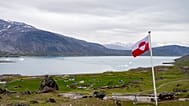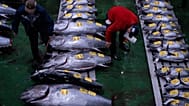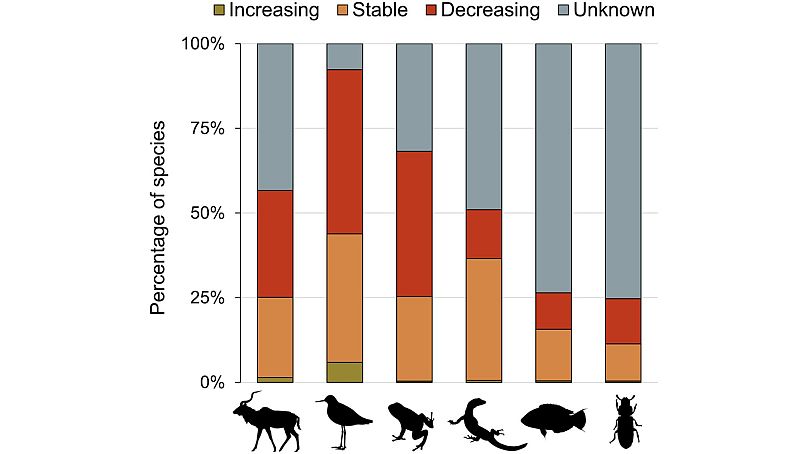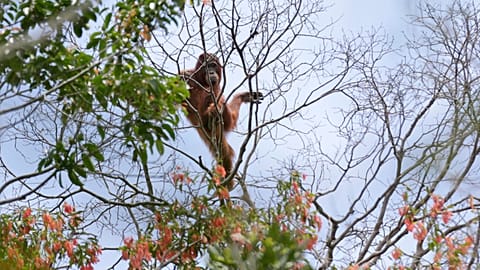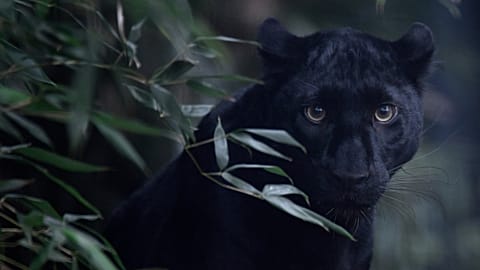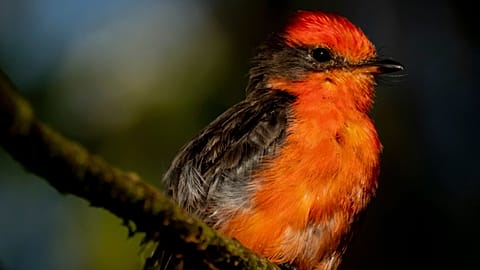New research has found the "sustained demographic declines" among animal populations are more alarming than previously thought.
Wildlife loss is "one of the most alarming syndromes of human impacts", according to a new study published in the Biological Reviews.
Researchers found that out of more than 71,000 species they analysed - spanning mammals, birds, amphibians, reptiles and fishes - 48% are undergoing population decline, while 49% are stable and only 3% growth.
The findings painted "a considerably more alarming picture" than the conservation estimates by the International Union for Conservation of Nature (IUCN) Red List, says the report.
‘Non-threatened’ species’ populations are declining
Wildlife’s conservation status is traditionally monitored by the IUCN Red List which classifies species according to how endangered they are, such as near threatened, vulnerable, endangered and others.
The latest study found that 33% of species deemed “non-threatened” are suffering population decline, which it says is "a symptom of extinction".
While the IUCN says 28% of species are under threat, this red list is not the only indicator of extinction risk.
Species can be considered "non-threatened", but the fact that their population is declining can mean they are heading towards extinction, warns the report.
Though echoing concerns laid out in the study, Craig Hilton-Taylor, head of the IUCN Red List, told CNN its results could "over-inflate the situation", since data is collected over a wide range of animal groups, including those where data is lacking.
He insists it is a less robust measure compared to IUCN's which looks at "the trends of species over much longer time frames".
Biodiversity 'on the brink of an extinction crisis'
The study points out that amphibians are particularly affected, highlighting "major deficiencies in our knowledge of population trends, particularly for fishes and insects".
When a specie's population drops too low, it cannot contribute as much to the ecosystem as it could, says the report.
For example, the overhunting of sea otters allowed a boom in kelp-eating sea urchins which decimated kelp forests in the Bering Sea, leading to the extinction of the kelp-eating Steller's sea cow.
Reducing one species is enough to unbalance the whole ecosystem, having a ripple effect on other populations that can snowball into wide-scale disruption.
The transformation of wild landscapes into urban areas or farmlands is seen by scientists as one of the main factors behind wildlife loss as it destroys their natural habitat. But climate change is also an important driver of species decline and its impact is worsening as the world warms.
Declines revealed in the study tend to concentrate around tropical areas while stability and increases are more prone to affect temperate climates.
Politicians aim for the 'minimum target'
Targetting habitat preservation, some initiatives like COP15's "30 by 30" goal, which aims at protecting 30% of land and ocean by 2030, have gained support.
More than 100 countries agreed to this engagement last autumn.
IUCN experts say this goal is the minimum politicians should be aiming for, with many studies calling for up to 70% or even higher of wild landscapes to be protected.
Wildlife habitat is deteriorating in the EU with 81% of natural habitat found to be in an "unfavourable" conservation status, according to a report by the European Environment Agency over the 2013-2018 period.
The world currently protects about 17% of its land and inland waters and less than 8% of marine and coastal areas, according to a UN Environment Programme report released in 2021.

